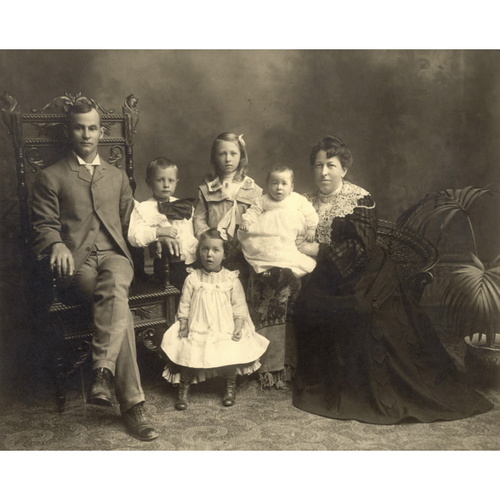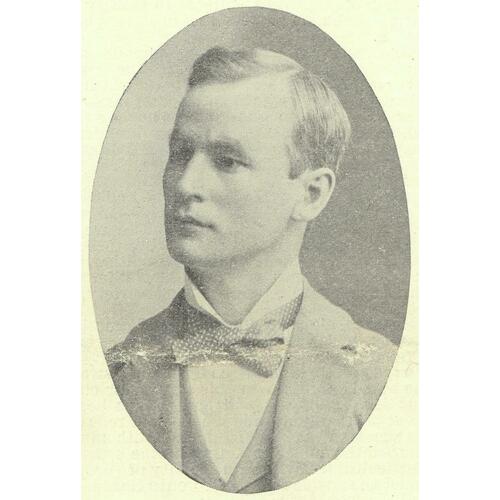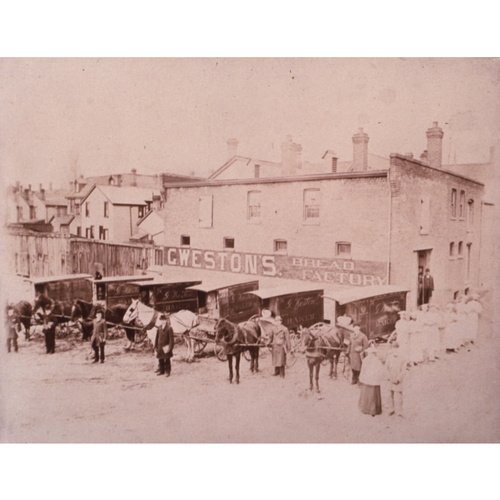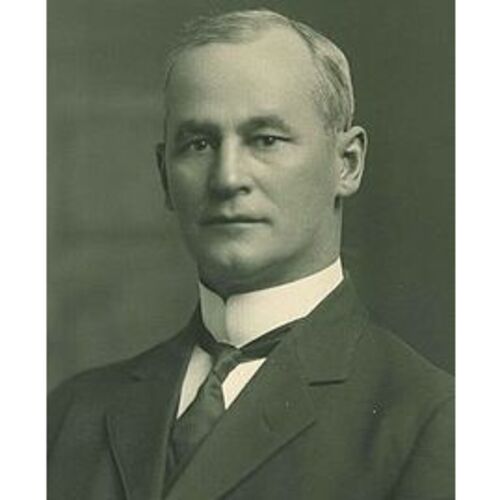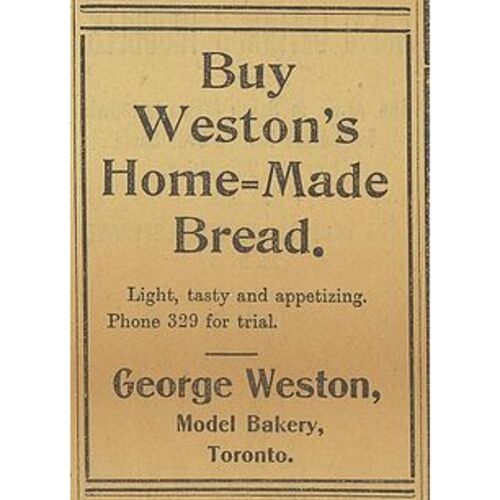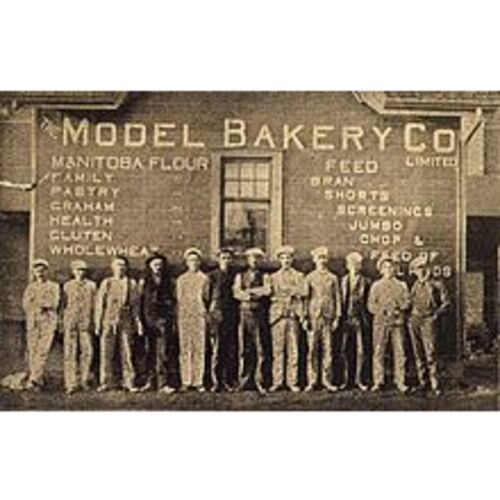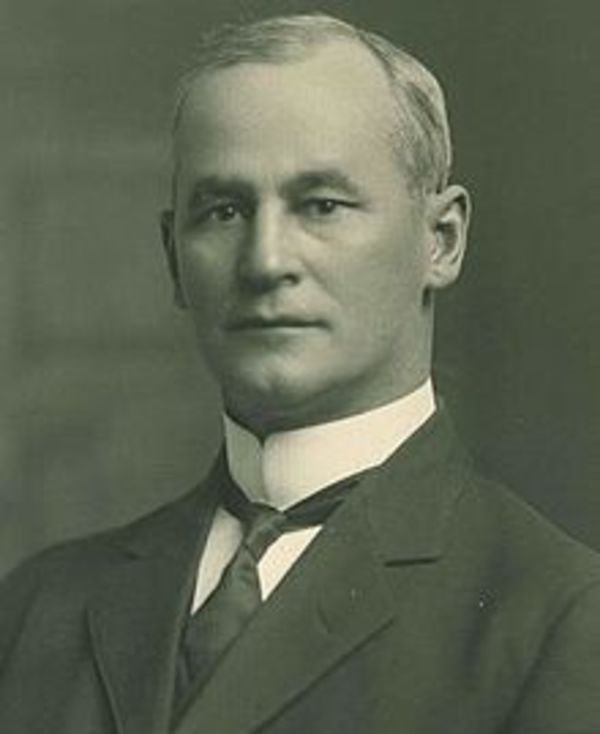
Source: Courtesy of Wikimedia Commons
WESTON, GEORGE, baker, businessman, and politician; b. 23 March 1865 in Oswego, N.Y., son of William Weston and Ann ———; m. 3 April 1889 Emma Maud Richards in Toronto, and they had six children, of whom two sons and two daughters survived childhood; d. there 6 April 1924.
As a child – the youngest of seven – George Weston moved with his family to Toronto so that his father, a labourer, might find better work than was available in Oswego. He received a rudimentary education at Wellesley Street School. At age 12 he found employment in the Yonge Street bakery of Charles J. Frogley, where he learned the physically demanding craft of bread-making; some three years later he began work at another bakery, operated by Gilbert H. Bowen. While employed there, the short, lean youth evidently began delivering bread and was introduced to sales and marketing techniques.
In 1882, at 17, Weston purchased two bread routes from Bowen. Through hard work he was able to acquire more; it was on one of his routes that he met Emma Maud Richards, a maid, whom he married. In 1892 he took over Bowen’s bakery, then located on Sullivan Street in the Grange area north of Queen. By the mid 1890s it was a moderately successful enterprise. Weston employed several horse-drawn delivery wagons and about 15 people; according to one source, his success stemmed in part from the fact that he paid his employees so little. Around this time he introduced his affordable “homemade” loaf, which became popular among those unable to bake their own bread. Weston promoted value and quality, but as business historian Charles Davies observes, “he had an insider’s knowledge of what people would accept and what he could get away with.”
Weston astutely recognized that bakeries were undergoing considerable technological change. He was convinced that the future lay not in small, manual operations but in large, mechanized factories that utilized automatic bread-making machines. In 1897 he opened what became known as the Model Bakery on nearby Soho Street. At this point Weston’s business took off. With a staff of 40 and a weekly payroll of roughly $350, it produced 3,200 loaves daily. In late 1900 he merged his business with that of John Lawrence Spink, a local grain merchant and mill owner, to form the Model Bakery Company Limited. For unknown reasons the partnership was formally dissolved on 1 Feb. 1907. In 1910 Weston opened a second plant, at Richmond and Peter streets, and a new firm, George Weston Limited, was incorporated that year.
A moderately prosperous businessman, Weston became involved in municipal politics. Between 1910 and 1914 he was an alderman for Ward 4. His campaign advertising in 1912, in which he presented himself as “the business man’s candidate,” suggests that he believed his commercial acumen could benefit local politics. By 1914, when he declined to run, he was beginning to attract other positions befitting a man of his status, among them seats on the boards of the Victoria Industrial School and the Toronto General Hospital. A devout Methodist, he generously supported the Bathurst Street Church.
In 1911, acting on a plan originally promoted by Niagara-area entrepreneur C. R. Morden, to merge several large bakeries into one, Weston and others had formed the Canada Bread Company Limited. Organized and underwritten by Toronto financier Cawthra Mulock*, the enterprise united Weston with Mark Bredin and Henry C. Tomlin of Toronto, William J. Boyd of Winnipeg, and Enoh James Stuart of Montreal. Weston’s participation was limited to investment and a directorship. Within two years, under Bredin’s management, the company was producing some 3 million pounds per week nation-wide. Canada Bread’s profits dropped as a result of supply and price fluctuations during World War I, after which depression and the federal regulation of flour content posed further difficulties for the firm. Still, by early 1919 its two Toronto bakeries alone were producing over 1.6 million pounds of bread each month.
Weston adhered to the agreement among the company’s directors not to compete individually against Canada Bread in the manufacture of bread for a period of ten years. His Model Bakery, in fact, had been abandoned by the new company in 1913. He continued, however, to produce biscuits and cakes under the name George Weston Limited at his factory at Richmond and Peter streets. Having travelled to England to learn about biscuit making, he applied this knowledge well and developed a good market. In 1921, after the period of non-competition, he resigned from Canada Bread and began making bread again, with his son Willard Garfield* joining him in George Weston Limited as vice-president. By this time Weston was also active in the affairs of other companies. He was, for example, vice-president of the Permanent Realty Company and a director of the City Dairy Company Limited and the American Sales Book Company Limited.
In March 1924 Weston suffered a severe stroke. He died on 6 April at his home on Palmerston Boulevard and was buried in Mount Pleasant Cemetery. In many respects he was a typical, successful, turn-of-the-century Toronto businessman. Aside from his time in municipal politics, he did not seek public adulation. His belief in hard work, frugality, and Christian morality all contributed to making him representative of his sort. Moreover, his straightforward interest in expansion and surmounting competition, through the formation of Canada Bread, was certainly typical. In building a strong enterprise, he laid the foundations for the food and financial empire established by his son Garfield.
A multi-media history of George Weston Limited has been issued by the company on CD-ROM under the title Weston digital archive 1997 ([Toronto], 1997). The CD, which contains some information about George Weston, largely focuses on the later period of the company.
AO, RG 8-1-1, 5862/1900; RG 22-305, no.49809; RG 55-1-2-B, charter book no.61; RG 80-5-0-174, no.14326. NA, RG 110, vol.1, Bakers’ monthly reports, February 1919. Daily Mail and Empire, 7 April 1924. Globe, 19 Dec. 1900; 23, 30 Dec. 1911; 2 Jan., 24 Dec. 1912; 2 Jan. 1913; 7 April 1924. Monetary Times (Toronto), 15 July 1911: 328; 5 Aug. 1911: 630. Toronto Daily Star, 7 April 1924. World (Toronto), 22 Feb. 1918. Charles Davies, Bread men: how the Westons built an international empire (Toronto, 1987). Directory, Toronto, 1874–1924. Industrial Canada (Toronto), 25 (1924–25): 84.
Cite This Article
Kerry Badgley, “WESTON, GEORGE,” in Dictionary of Canadian Biography, vol. 15, University of Toronto/Université Laval, 2003–, accessed April 3, 2025, https://www.biographi.ca/en/bio/weston_george_15E.html.
The citation above shows the format for footnotes and endnotes according to the Chicago manual of style (16th edition). Information to be used in other citation formats:
| Permalink: | https://www.biographi.ca/en/bio/weston_george_15E.html |
| Author of Article: | Kerry Badgley |
| Title of Article: | WESTON, GEORGE |
| Publication Name: | Dictionary of Canadian Biography, vol. 15 |
| Publisher: | University of Toronto/Université Laval |
| Year of revision: | 2005 |
| Access Date: | April 3, 2025 |


